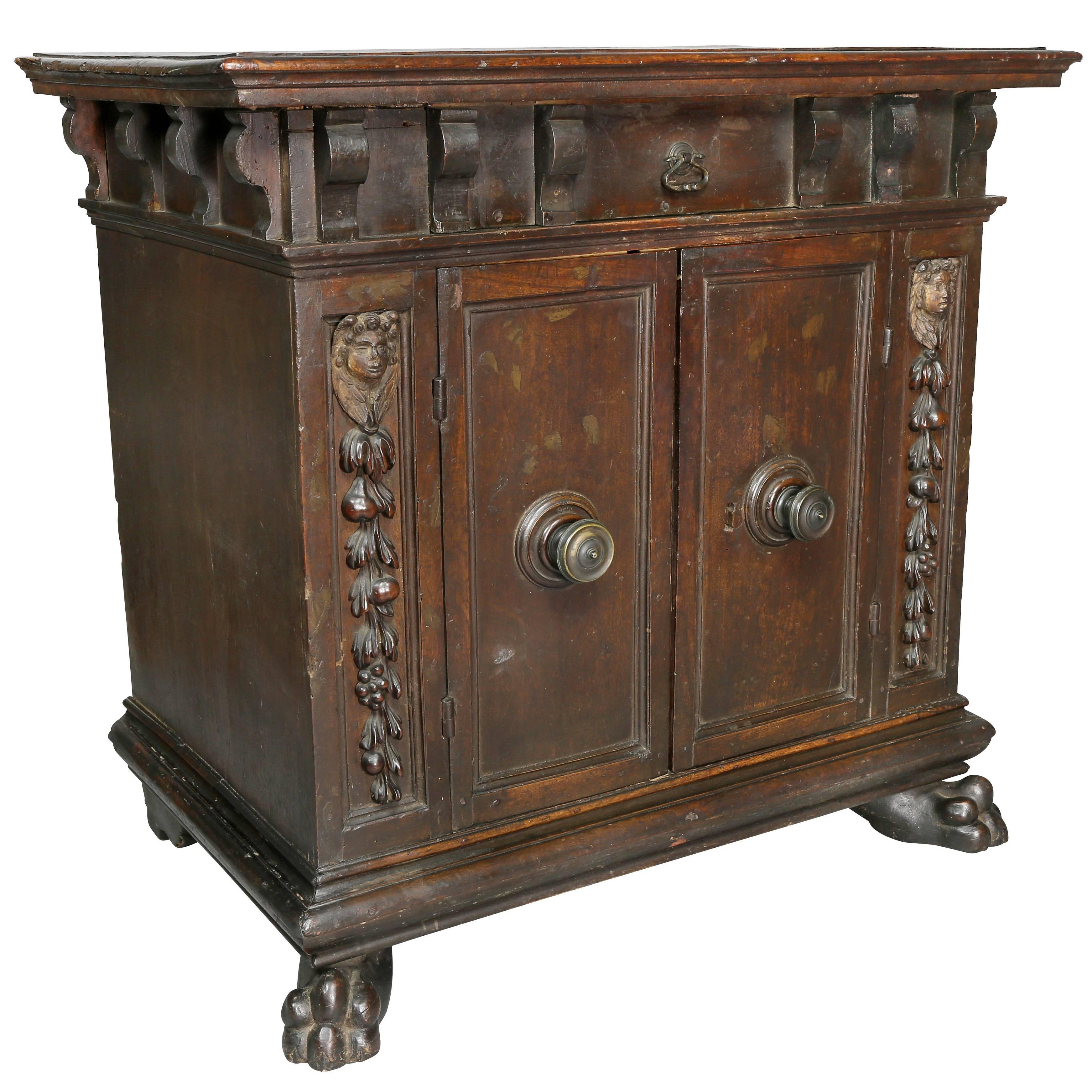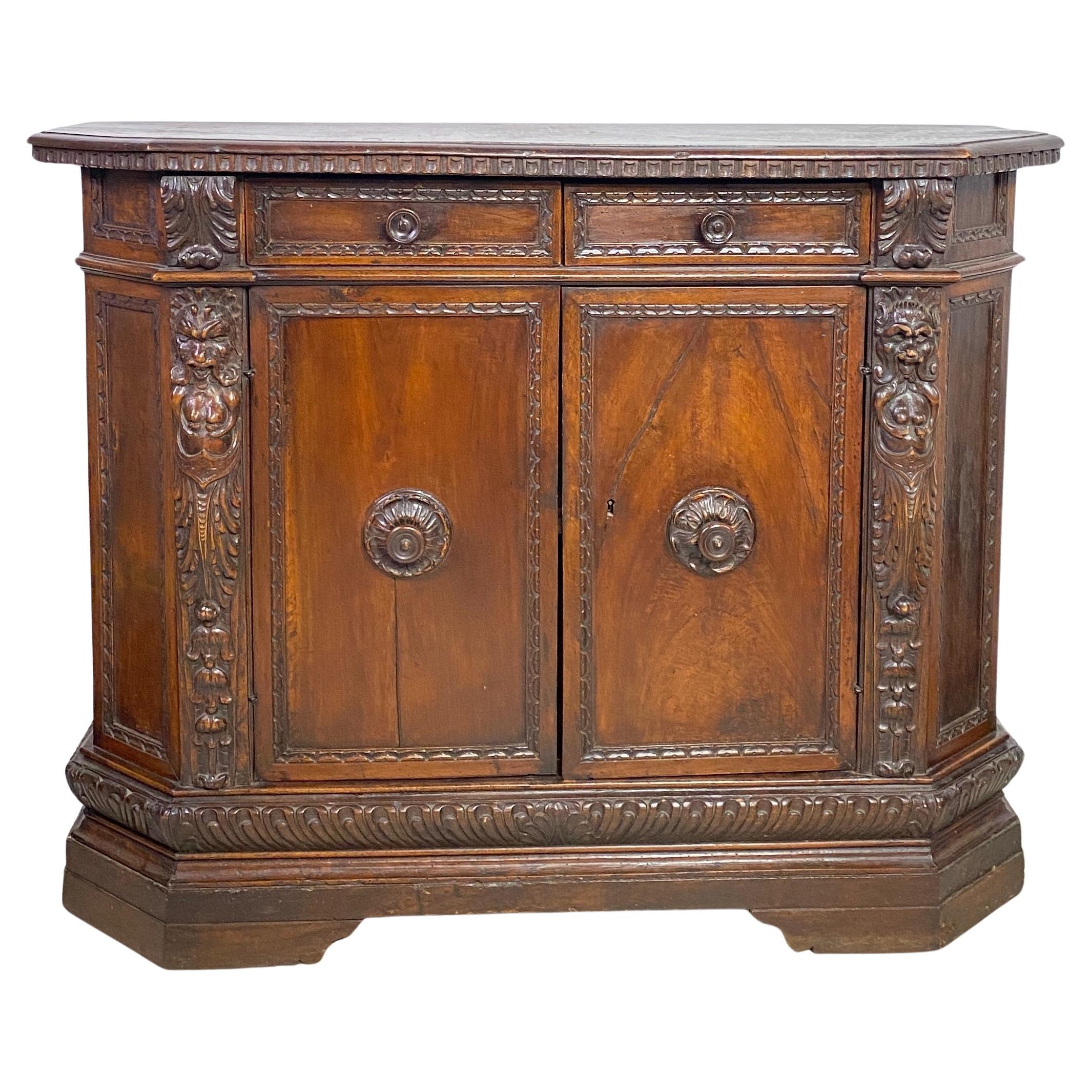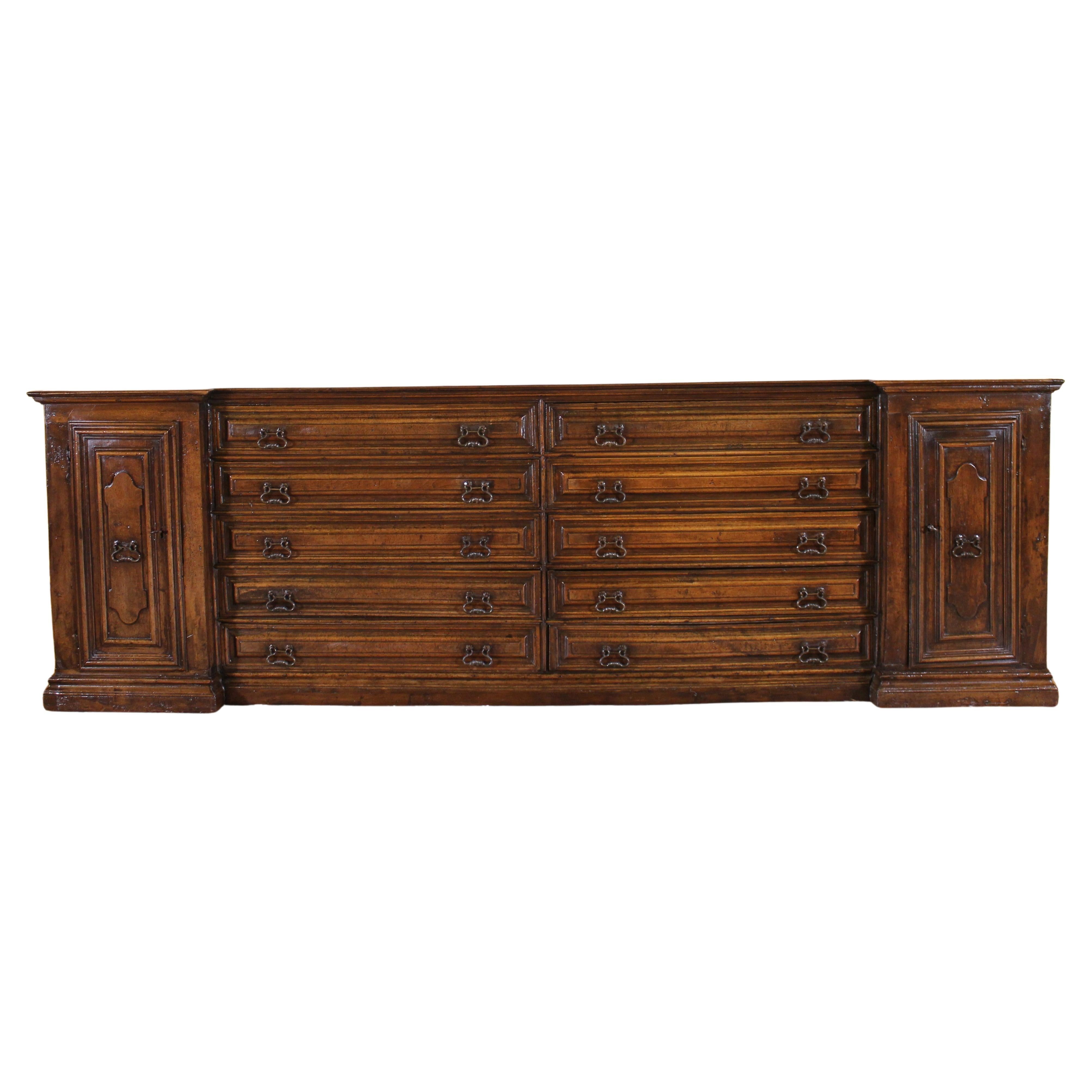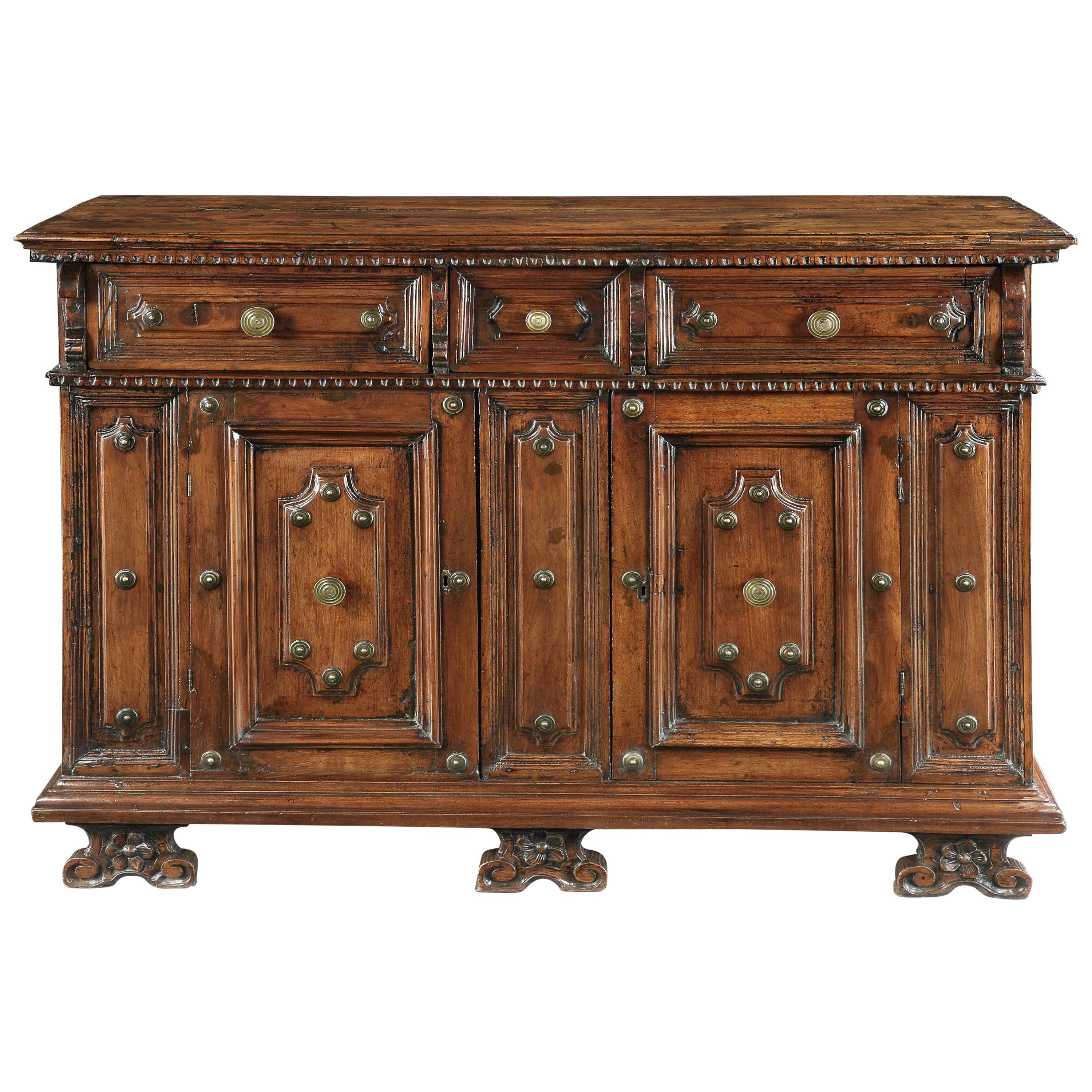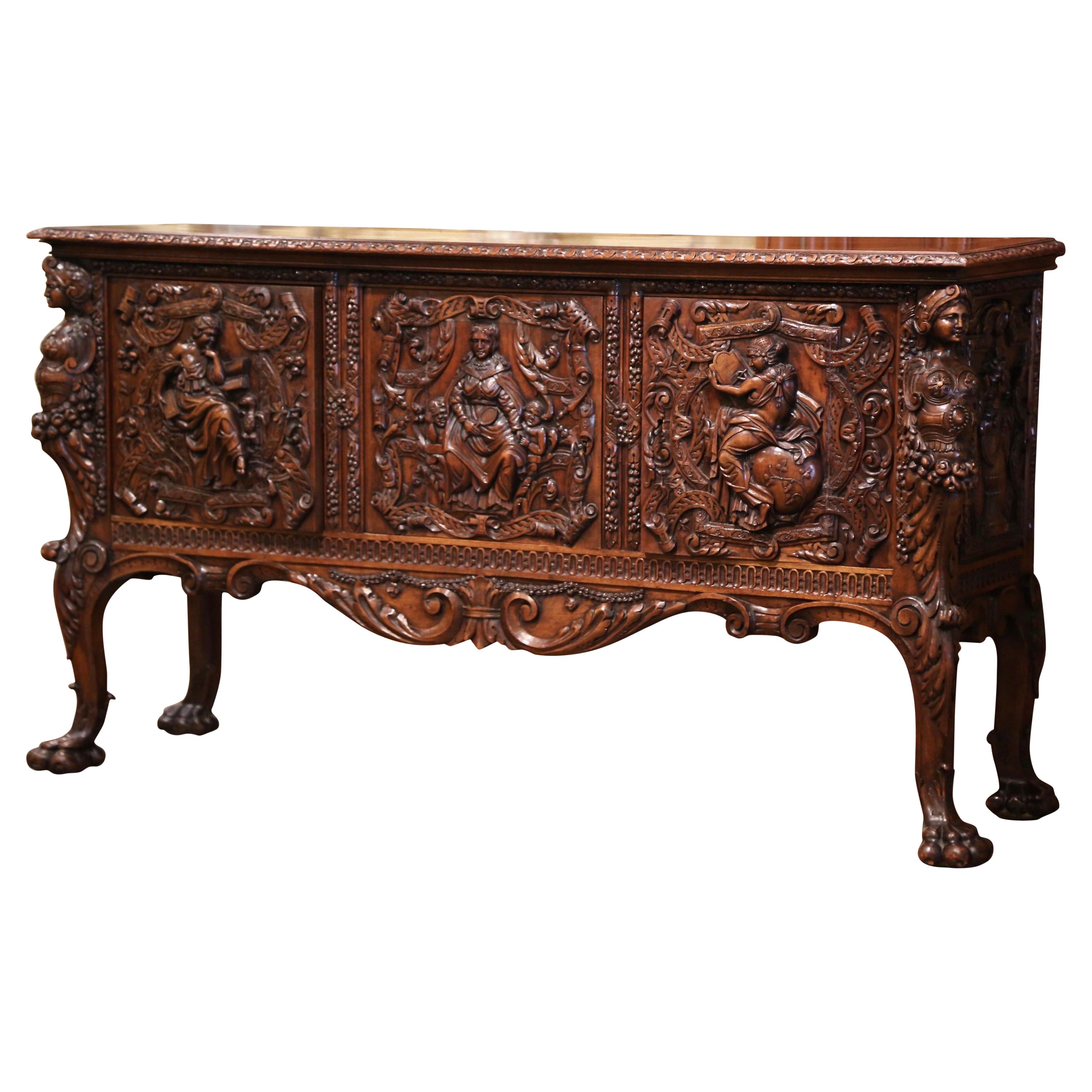Items Similar to Important and sober Italian Renaissance Credenza
Want more images or videos?
Request additional images or videos from the seller
Important and sober Italian Renaissance Credenza
About the Item
ORIGIN : ITALY, VENICE
PERIOD : 16th CENTURY
Height: 103 cm
Length: 174 cm
Depth 45 cm
Walnut
Usual restoration
The low sideboard with several doors became more common in the 16th century in northern Italy. Palace furniture used in the bedroom or the dining room, it is sometimes called "credenza".
This beautifully crafted, powerful and balanced model consists of a main body opening with two leaves. Resting on claw feet, it rises on a wide base.
Every part of the credenza - base, side uprights, leaves - are framed by delicate moldings highlighted with lunula friezes, thus highlighting the very fine-grained walnut surface.
This credenza is characterized by the elegance and sobriety of its decor and illustrates the Italian production of the Renaissance.
- Dimensions:Height: 40.56 in (103 cm)Width: 68.51 in (174 cm)Depth: 17.72 in (45 cm)
- Style:Renaissance (Of the Period)
- Materials and Techniques:
- Place of Origin:
- Period:
- Date of Manufacture:16th Century
- Condition:Wear consistent with age and use.
- Seller Location:Saint-Ouen, FR
- Reference Number:1stDibs: LU3115337983692
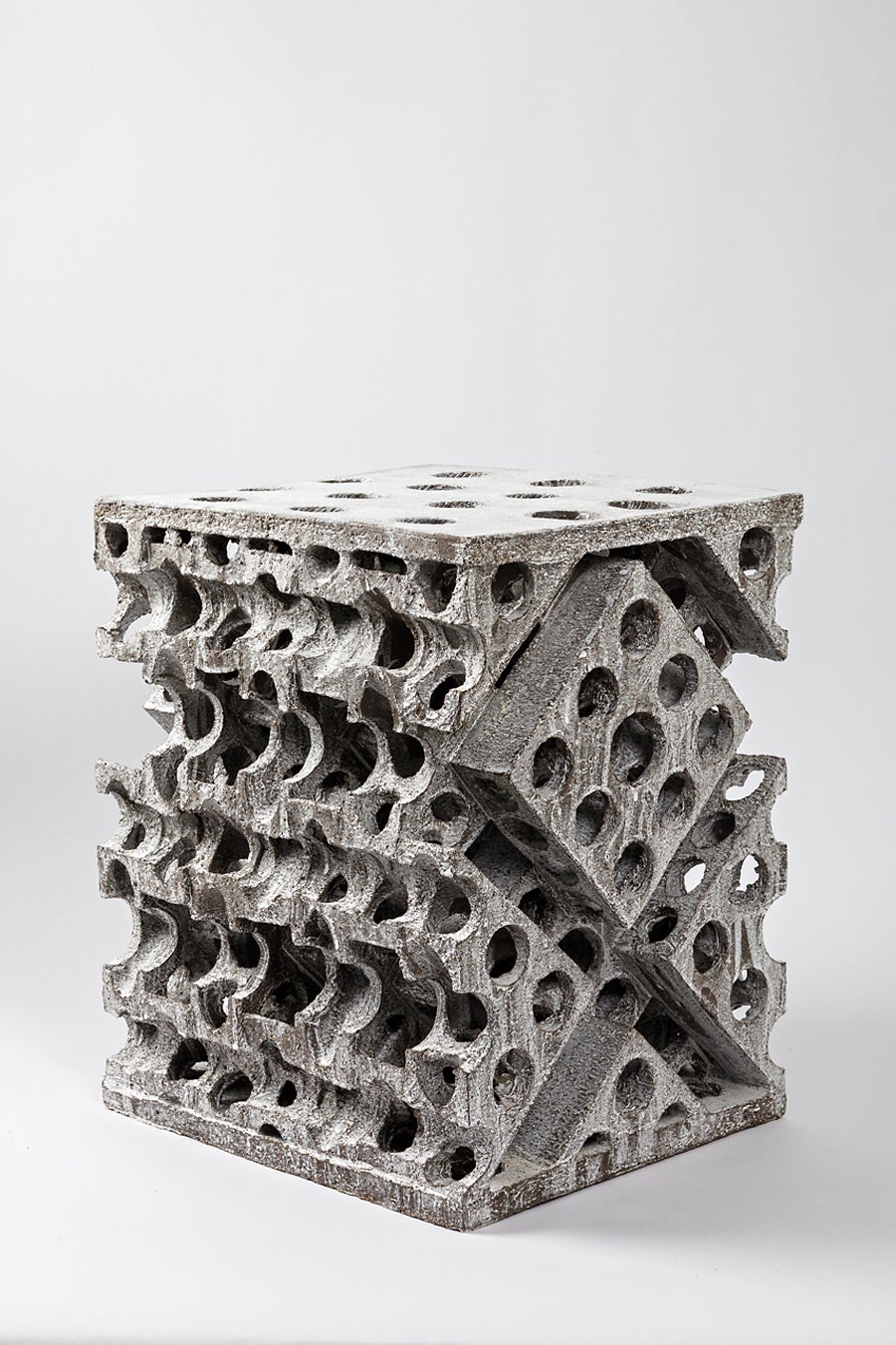
About the Seller
5.0
Vetted Seller
These experienced sellers undergo a comprehensive evaluation by our team of in-house experts.
Established in 2016
1stDibs seller since 2017
159 sales on 1stDibs
Typical response time: 7 hours
- ShippingRetrieving quote...Ships From: Paris, France
- Return PolicyThis item cannot be returned.
More From This SellerView All
- Italian Credenza at Sideboard heightLocated in Saint-Ouen, FRItaly, Florence Walnut wood Good state of preservation Former Collection Bresset The "credenza" is a typical piece of furniture from Italy. It evolved during the 15th century from an earlier form, a table with shelves for decorative purposes, which played a role in the ceremonial settings of refined environments. Transformed into a low cabinet with two doors...Category
Antique 16th Century Italian Renaissance Credenzas
MaterialsWalnut
- Important Italian Renaissance GardenerLocated in Saint-Ouen, FRIMPORTANT ITALIAN RENAISSANCE GARDENER ORIGIN: NORTHERN ITALY PERIOD: 16th CENTURY Height: 52 cm Length: 130 cm Depth: 53 cm Verona marble Taking the form of an antique sarcopha...Category
Antique 16th Century Garden Ornaments
MaterialsMarble
- Rare and Important German Renaissance ChestLocated in Saint-Ouen, FROakwood Original lock and key This beautiful and robust chest stands on square feet ending in flattened buns. The base presents plain mouldings. The facade is divided in four panel...Category
Antique 16th Century German Renaissance Blanket Chests
MaterialsWood, Walnut
- Important Italian Renaissance Polychrome Chest with Coat-of-ArmsLocated in Saint-Ouen, FRImportant Italian Renaissance Polychrome chest with coat-of-arms Origin: Italy Period: early 16th century Height: 71cm Length: 190cm Depth: ...Category
Antique 16th Century Renaissance Blanket Chests
MaterialsWood
- Florentine Credenza with Corner ColumnsLocated in Saint-Ouen, FRFLORENTINE CREDENZA WITH CORNER COLUMNS ORIGIN : TOSCANY, ITALY PERIOD : LATE 16th CENTURY Height: 84 cm Width: 101 cm Depth: 48 cm Walnut wood Although the first Italian cre...Category
Antique 16th Century Credenzas
MaterialsWalnut
- Important French Renaissance ChestLocated in Saint-Ouen, FRIMPORTANT FRENCH RENAISSANCE CHEST ORIGIN : BURGUNDY, FRANCE PERIOD : 16th CENTURY, 2nd FRENCH RENAISSANCE Height: 85cm Length: 170cm Depth: 68cm Oak wood Good condition Original lock Chest is an essential item of Medieval and Renaissance furniture. With its handles it was conceived to be easily moved from one house to another. It would hold linens, dishes or jewellery. Chest was also the ideal wedding present and would enclose the bride’s trousseau. In the middle of the 16th century chests are decisively transformed, their conception now favouring architecture, sculpture and images. This oak wood chest shows impressive proportions with a solid frame. Large mullions are assembled with mortise and tenon joints also securing three carved panels. The facade lower part comprises a high plinth hiding the base of the jambs and acting as feet. It is carved with a frieze of canal motifs topped with palm leaves. The carved decor spreads over the facade of the chest and underlines its structure. On the mullions appears a vegetal decor including roses and palm leaves executed with rigorous symmetry. They frame three rectangular panels. The central one is enriched with two female sphinxes back to back. They wear helmets and spread their wings while their body is partially hidden by long leaves. In the centre a female mask is positioned over draperies. The two lateral panels show a similar but not identical decor. Indeed we can notice a few variations in the motifs. The left hand side panel is adorned with a cut-out leather upon which is depicted two extraordinary ram heads. Their bodies are intertwined with the leather and vegetal motifs in elegant scrolls. A large chou bourguignon stands between both heads. The panel is centred with another ram’s head carved in high relief. On the right hand side panel the composition is alike. The chou bourguignon has been replaced with a shell and the lower part of the panel is adorned with two large fully bloomed flowers. The chest is topped with a frieze of geometrical motifs including scrolls, ovals and rectangles. On the sides, the surface is divided in two moulded rectangular spaces adorned with frame-like scrolls, rectangular cartouches and palm leaves. The chest closes with a massive original lid that can be locked with a key. The important and abundant sculpted decor of this chest allows us to locate its conception in the Burgundy region, France. The regular composition is allied to a remarkable imaginative freedom in the execution of the figures. The very rich iconography draws from the art of Fontainebleau as well as Italian art. The Italian Wars have indeed favoured artistic exchanges and influences between France and the peninsula. The craze for Italian art, particularly during the reign of King François I...Category
Antique 16th Century Blanket Chests
MaterialsOak
You May Also Like
- Italian Renaissance Walnut CredenzaLocated in Essex, MAWith old finish. Rectangular top with molded edge over a frieze with mounted corbels and a false drawer over a pair of cabinet doors with original handles all flanked by mask and flo...Category
Antique Mid-17th Century Italian Renaissance Cabinets
MaterialsOther
- 18th Century Important Tuscany Renaissance Sideboard Credenza, in Solid WalnutLocated in Vigonza, PaduaCode: FR45 Antique Tuscany heavy and massive sideboard in solid walnut. In two parts: the top with two doors and two internal shelves with spiral wal...Category
Antique Mid-18th Century Italian Renaissance Sideboards
MaterialsWalnut
- 17th Century Walnut Italian Renaissance CredenzaLocated in San Francisco, CAAn extraordinary Tuscan Renaissance period walnut credenza in superb original condition. Hand carved, warm rich original patina, having two drawers and a single interior shelf. Italy...Category
Antique 17th Century Italian Renaissance Credenzas
MaterialsWalnut
- Italian Renaissance Sacristy Buffet / Credenza In WalnutLocated in Brussels, BrusselsItalian Renaissance sacristy cabinet / buffet in walnut early 17th century probably from Venice Superb and rare sacristy credenza composed of 10 drawers and two doors. T he large dra...Category
Antique Early 17th Century Italian Renaissance Credenzas
MaterialsWalnut
- Credenza Sideboard Cupboard Walnut Italian Bologna Brass Studwork RenaissanceLocated in BUNGAY, SUFFOLKThis is a fine example of a Renaissance period credenza or sideboard that would have been made for an Italian Palazzo. The shaped moulded panels and brass studwork ornamentation are ...Category
Antique Early 1600s Italian Renaissance Credenzas
MaterialsWalnut
- Mid-19th Century Italian Renaissance Hand Carved Walnut Credenza CabinetLocated in Dallas, TXThis heavily carved credenza was created in Italy circa 1870. Built of solid walnut, the buffet stands on elegant cabriole legs decorated with acanthus leaves at the shoulders, and ending with paw feet. The cabinet features three doors across the front opening to inside shelving for ultimate storage, over a scalloped apron. The buffet is richly carved throughout with high relief female figures in the corners, carved females on each door, scroll motifs and floral vase arrangements on both side panels. The Renaissance style sideboard...Category
Antique Mid-19th Century Italian Renaissance Credenzas
MaterialsWalnut
Recently Viewed
View AllMore Ways To Browse
Brass Trim Credenza
20th Century Low Credenza
Glam Credenza
Mid Century Low Media Cabinet
Teak Credenza 47
Lawson Fenning Credenza
Gf Davis Allen
Midcentury Cabinet Danish Designer
Midcentury Brass Credenza
Ornate Credenza
Organic Modernism Credenza
Accordion File
Gordon Russell On Sale
Wud Kenmare Credenza
2 Door Teak Media Cabinet
55 Inch Credenza
90 Inch Credenza
Art Deco Burlwood Credenza
